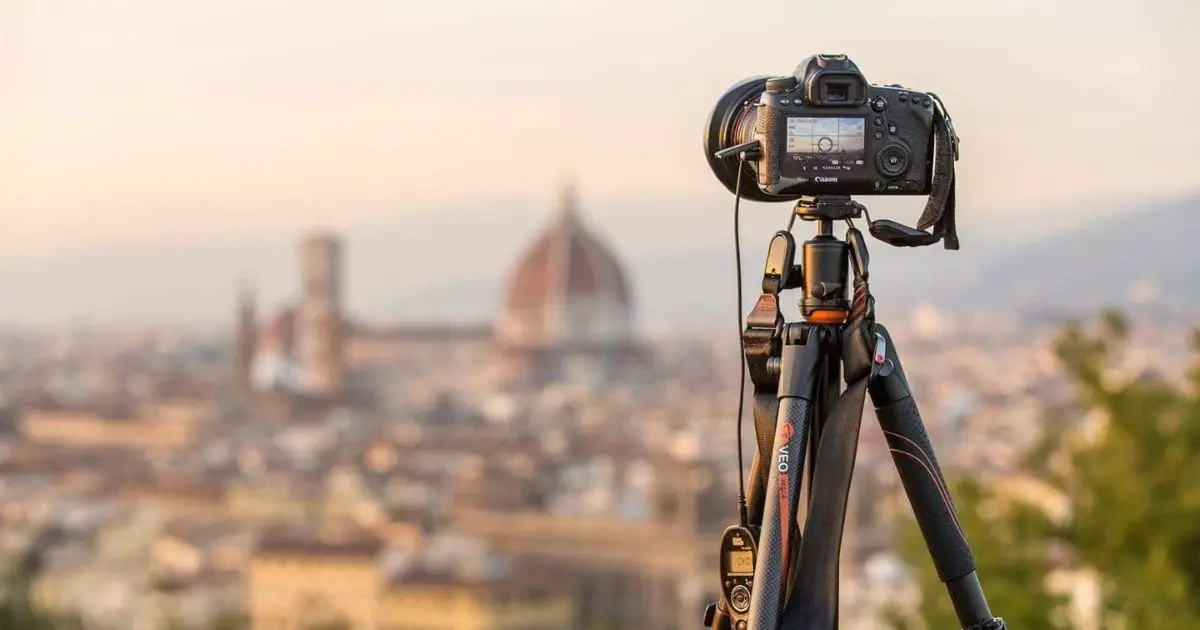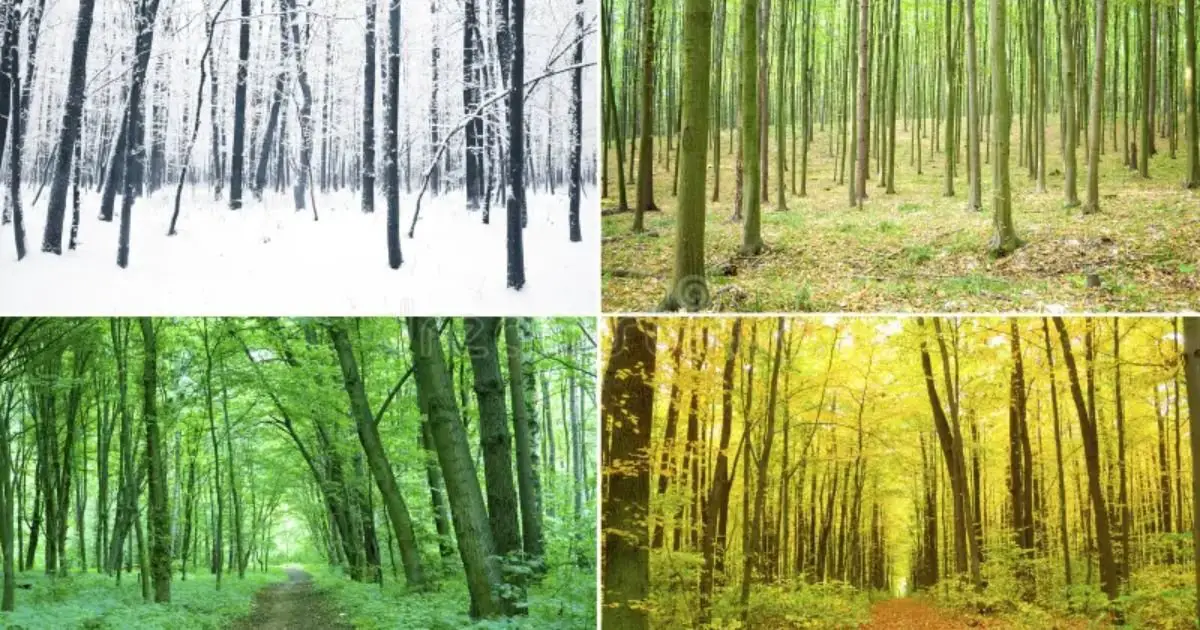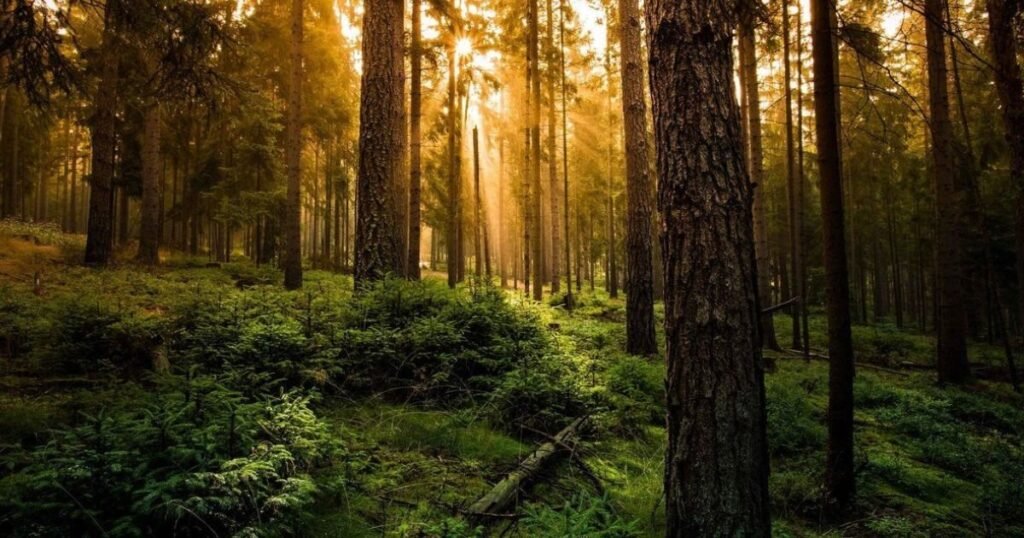[ez-toc]
Forest photography refers to nature photography that captures the feeling and beauty of the forests and the woodlands. It deals with objects such as trees, leaves, animals, and views, especially with the contrast of light and dark. The primary purpose of this kind of photography is to capture the serene, the mysterious and the natural about forests. Sometimes future techniques require the management of different levels of light and distinct equipment designed for work in the dark.
Forest photography: A beginner’s guide
Forest Landscapes
When shooting forests, the primary images are reserved for the space and beauty of the forest. Look for areas with no obstructions, straight and indirect roads as far as possible and any open field. It is suggested to take forest landscapes in the early morning or late afternoon because the light is much softer and the shadow significantly longer.
Tree Photography
Woods are the basis of any forest, and shooting trees can often turn into a real photo masterpiece. Select mature trees with unique forms, trunks, or branches, and shoot several trees to demonstrate the forest density and species variety. It is advisable to focus on the arrangements, particularly the barks, branches, and leaves, because they can be impressive in the pictures. Take photographs from various angles and positions to portray the size and personalities of the trees.
Wildlife in Forests
There are populations of birds, mammals, insects and amphibians in forests. When shooting wildlife in forests, one must constantly be patient as animals emerge slowly. It is very important to approach the animals very gently to avoid scaring them away and then photograph them from a very distance with the help of a telescopic lens. Wildlife is mainly seen in the early morning and late afternoon since that is when most of the animals are most active.
Forest Light and Shadows
What is unique about forest photographs is light and shade. Owing to the developed crown cover, somewhat different conditions of illumination can be encountered in any forest. Search for rays of sunlight that come through the trees and bring rather dramatic and surreal lights. Partial cloudy days can also give medium lighting that reduces strong contrast and shows the details of the forest.
Forest Floor Details
Don’t forget to look down, as the forest floor is a treasure trove of details and features. After a heavy downpour or during autumn when the leaves have fallen, the forest floor becomes a canvas for macro photography, from moss on trees to mushrooms and ferns. Get down low and use a macro lens to capture these intricate wonders in detail. The forest floor is usually green, moist, and somewhat murky so that a tripod can be a helpful tool for steady, longer shots.
Canopy Photography
From this vantage point, the forest canopy with branches and a leaf network provides a beautiful view. Turn up and photograph the work done by the interlocking of the foliage. Canopy photography can help express the feeling of being surrounded by the trees and show how the light falls through the branches. To capture more of the scene and to give the impression of height, the photographer should use a wider lens as opposed to a tele lens.
Do I Need a Tripod for Forest Photography?

Yes, a tripod is helpful in forest photographs because forest areas are often home to several fauna and flora. The environment in the forest habitat can be characterized by high humidity and low light intensity since vegetation layers here can be relatively dense. A tripod proves helpful for longer exposure shots in as much as it will eliminate motion effects. This helps one to obtain clear photographs in low light and the option of using low ISO values for improved picture quality. JEE for the scene, landscape, macro, and use when there is a need for slow shutters for wildlife or water movement. Thus, I dedicate this section to some specific recommendations of what can really improve your forest photography, namely a lightweight, portable tripod.
Best Conditions to Photograph Forests
Early Morning and Late Afternoon: Periods such as these, referred to as the golden hours, produce a warm, soft light that works splendidly for forest scenes and form. Some shadows are long, providing depth to the images that you are taking.
Overcast Days: Overcast conditions do not allow direct sunlight, which forms sharp shadows and draws attention to small features. This is especially useful when shooting details of the trees and the many colors of a forest.
Foggy or Misty Conditions: Fog and mist add mood and scale to the picture, making photography intriguing. They are ideal for creating the mystic look of forests that became so popular on Pinterest.
After Rain: The state of forests after rain is relatively fresh and full of energy, hence referred to as post-rain conditions. Each reed and every blade of grass, every surface of metallic or plant texture, has the aqueous side of sheen: it intensifies colors and gives a glossy sheen.
Autumn and Spring: These seasons are characterized by very sharp differences in color. Summer can also be bright as it raises the temperature, and summer is also associated with the colors of fire, such as red, orange and yellow. The colors of Spring are fresh green and blossoming flowers.
Snowy Conditions: Winter turns forests into a sort of fairy tale. Snow guarantees a bright, pure background, which makes the tree and the path stand out and look sharp in black and white or high-contrast color.
Thus, selecting the right conditions enhances the outcome of a beautiful forest, and the resultant photographs on the screen are astonishing.
Seasons for Forest Photography

Spring: One of the best seasons to take forest photos is in Spring because new life starts to grow. The scenery is full of trees with fresh green leaves, flowers are blooming and trees with buds on them. Animals in forests are more active as the dry season sets in, thus providing excellent hunting grounds as it was with the leopard. The details of the forest floor are rich with colors of green from the moss and the wildflowers.
Summer: Forests during summer are mainly characterized by the density and fullness of trees, which make it possible to take tree photographs. The canopy photography is perfect here; the leaves are very thick, and they overlap, creating unique patterns with good texture—some sort of Forest light and shadows with dense forests with sunlight passing through them. The raw feeling that it conveys, along with the gloom and the mist, can only be captured during this season.
Autumn: It is perhaps during the Autumn season that forest photo opportunities give their best bang. The forest landscapes are relatively warm, having shades of red, orange, and yellow because of the changing trees’ foliage. Photography of trees is the most enriching, with every tree presenting a different spectrum of colors. There are most often dead leaves on the ground, which adds dimension and color to the photographs. Lighting the canopy photography in autumn is favorable because the play of colors from the fallen leaves paints a beautiful picture.
Winter: Winter likely gives the forest a romantic, almost fairy-like appeal. Empty trees and trails covered in snow give striking black-and-white or high-contrast color shots. Forest has some wilderness areas; hence, it may be somewhat challenging to take pictures of some animals, but shooting them against the snowy background can be very fulfilling. Natural features are accentuated further in the forests, especially during the golden hour, to give the wanted effects. The overall composition at the bottom of the forest has to do with the lighting; first of all, such things as frost on leaves and branches covered with snow are exciting and beautiful.
Every season has its benefits and difficulties in forest photographing. By identifying the characteristics of each season, it is possible to illustrate the changes in the forest landscape throughout the year.
Best Settings to Photograph Forest
Aperture (f/stop)
- Landscape Shots: Choose a larger latitude (smaller f-number, in the range of f/8 to f/16) to increase the depth of field and keep the foreground and background objects in focus.
- Isolated Subjects: In portraits, use a greater aperture (small f-number, f2. 8- f 5. 6) to make the background out of focus.
Shutter Speed
- Still Scenes: In case of poor lighting, select a lower shutter rate for the model’s shot (e.g., 1/30 or lower) to allow more light to get in. One cannot conduct vlogging without a tripod just in case there is jiggling movement that the camera is sensitive to.
- Motion: You need to lower the shutter speed (For example, 250 of faster) to capture the movement of animals or moving leaves. For picture motion blur, like in the case of water, use a slower shutter speed, for example, between 1/15 and several seconds.
ISO
- Base ISO (100-400): Always choose the lowest ISO value to reduce noise and maintain good picture quality. Under optimal lighting, the settings to be used are ISO 100-200.
- Higher ISO (800-3200): Use ISO up in low light to ensure good exposure when a slow shutter is not possible. Depending on the camera, try to avoid loud noises, and if that is not possible, just be conscious of the noise.
- Focus Mode: Single-point focus is used to finely focus on a particular object, such as a tree or a small part of the forest floor.
- Continuous Focus: These are used to follow the motion of moving objects like animals in forests.
White Balance
- Auto White Balance: It functions considerably in most circumstances and trifle on account of the fact that the vividness of the woods illuminations.
- Custom White Balance: The user can adjust the white balance to give a realistic image of color, mostly in situations that require portraiture, such as foggy or golden hour.
14 forest photography ideas and tips
Golden Hour Magic: Take pictures at dawn or hour dusk because it will provide that warm, soft and coming through trees like a fairy tale backdrop.
Mist and Fog: The rare occurrence of fog in the morning, especially in the forest, is a sight to behold. It brings a magical and dreamy feeling to your photos, making them truly unique. To capture these atmospheric conditions, one should go to the forest after it rains at night or dawn.
Macro Photography: Choose reasoning related to accurate images of the forest, the details that most likely will be unnoticed by an average guest, such as dew on leaves, a spider’s web, or the variety of mushrooms. A macro lens can photograph these close-up wonders.
Leading Lines: Lighting is commonly used to make leading lines in the image; these can be pathways, streams, or even fallen logs that will make the viewer’s focus go deeper and feel that they are part of the photo.
Silhouettes and Shadows: Have fun with shapes and shadows, especially at dawn and at dusk. The trees clearly depicted could be black or dark, while the sky depicted could be light or some light color.
Wildlife Encounters: Patience is key when it comes to snapping wildlife in the forest. Be prepared to wait, and you stand a good chance of capturing animals in their natural habitat. Birds, deer, squirrels, and chimpanzees can give a face to the forest, making your photo more appealing.
Reflections: Search for reflections on ponds, lakes or even storm puddles in the trees and sky. This can give the images a mirror-like quality and add a nice touch of uniqueness.
Seasonal Changes: Photograph the forest in its various seasons so that you can see the beauty of each season. Photography in other seasons of the year is interesting because different things present themselves in different ways: the bright colours of fall, the green plants of spring, summer foliage, and the white or at least the absence of colours, that come associated with winter.
Framing with Nature: Young branches or new leaves lead the subject or focal point of the picture. This technique improves photographs by providing a background and relation to the entire material.
Long Exposure: Try using lengthy exposure to photograph the flow of streams, waterfalls or even the swing of trees. This can give your images a stream-like appearance, provided they are visually compatible.
Texture and Patterns: Choose a subject and abstract it to the environment where it was found; the texture and patterns in the forest, like the trunks and branches of trees and leaves, as well as water ripple. These details can cover a lot more and can enhance the photos.
Human Element: Include a person in your forest photos to give a proper sense of scale as well as something for the human eye to focus on. This can also lead to novelty and the discovery of something unknown.
Wide-Angle Perspective: Zoom out and point the camera at the trees and the enormous size of the forest. This can also accentuate the vastness of the natural setting, as in the photo.
Black and White: Perhaps you can turn some of the forest pictures to black and white. This can accentuate the differences and layers and make your images look classic and edgy.
Conclusion
To consider oneself a true fan of forest photography, it is necessary to know how to work with the golden hour, the morning haze, macro elements, lead techniques, experiment with the exposure time, give the focus on textures and patterns and use the seasons properly to create powerful and appealing images.





